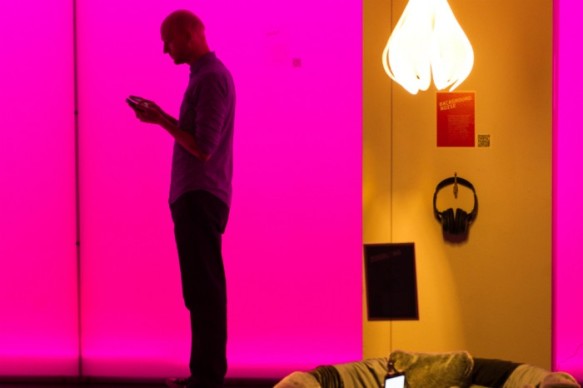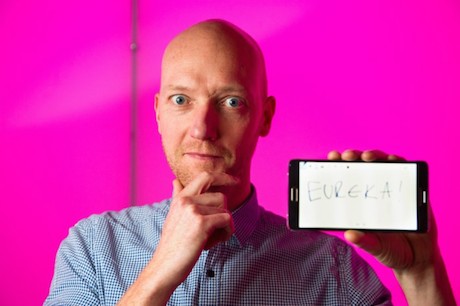Creating Inspiration and Relaxation: No Tools Required
In celebration of its new Galaxy Note 4, the Samsung corporation has set up something called the Eureka! Room. The room, located in London’s Proud Archivist gallery/restaurant/event space and developed by O2 and London Science Museum’s Inventor in Residence Mark Champkins, channels all of the latest research into the ideal conditions for creative inspiration.
Inspiration has been shown to thrive when people are relaxed. Accordingly, the room’s wall are colored “Drunk Tank Pink,” a relaxing hue. There are two soundtracks available to visitors: either a non-repeating birdsong or straight up silence. There is soft lighting and the temperature is set to 71 degrees, the optimum “working” temperature based on analysis by The Lawrence Berkeley National Laboratory.
Attendees are also given “Thinking Gum,” since chewing gum has been found to increase alertness and reaction time by the National Institute of Radiological Sciences (NIRS). People are also given hot chocolate, which the American Association for the Advancement of Science found increases blood flow and oxygen to the brain. Finally, there’s a bath available, to get you totally inebriated on inspiration. In this state, you are encouraged to doodle on the Galaxy Note 4 “phablet.”
There’s a tinge of irony in an event designed to incite relaxation and inspiration being sponsored by a behemoth technology company. A few days ago, the NY Times published an op-ed entitled “The Joy of Quiet.” In it, novelist Pico Iyer describes how some of the most world’s most creative minds–people like Phillippe Starck and Stefan Sagmeister–see stillness–the kind that mobile tech and other devices featuring glowing screens have a propensity for shattering–as the chief activator of inspiration. Iyer writes how people are paying hefty premiums and taking many measures for the opportunity (imposition?) to be offline. He writes:
In barely one generation we’ve moved from exulting in the time-saving devices that have so expanded our lives to trying to get away from them—often in order to make more time. The more ways we have to connect, the more many of us seem desperate to unplug. Like teenagers, we appear to have gone from knowing nothing about the world to knowing too much all but overnight.
He continues:
The central paradox of the machines that have made our lives so much brighter, quicker, longer and healthier is that they cannot teach us how to make the best use of them; the information revolution came without an instruction manual. All the data in the world cannot teach us how to sift through data; images don’t show us how to process images. The only way to do justice to our onscreen lives is by summoning exactly the emotional and moral clarity that can’t be found on any screen.
He talks about his own (extreme) measures by which he stokes his creative process. He doesn’t use a cell phone (claims to have never used one), he doesn’t go online until he’s done writing for the day, he doesn’t use Facebook and, oh yeah, he moved from Manhattan to rural Japan. He also take regular retreats to a Benedictine hermitage, where he says he “just take walks and read and lose myself in the stillness, recalling that it’s only by stepping briefly away from my wife and bosses and friends that I’ll have anything useful to bring to them.” Sounds about right.
While we don’t want to poop on the Eureka! Room’s premise, nor make any declarations about the mutual exclusivity of technology and relaxation, we will give a plug for complete disconnection–that the formula for creating stillness and inspiration is not a complex one, but rather the simplest one: doing one thing–whether it’s walking, eating, writing, painting, reading, etc–and only that one thing.
via PSFK






